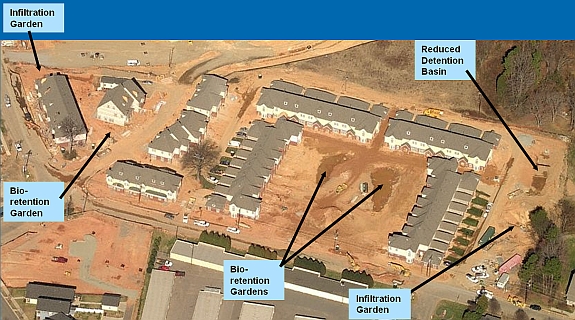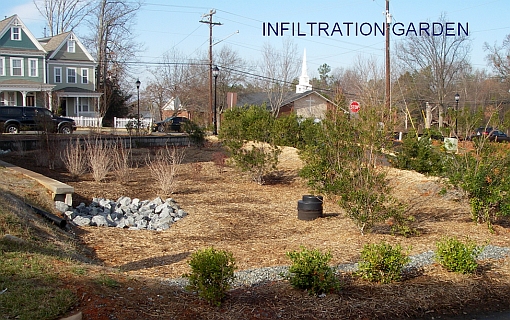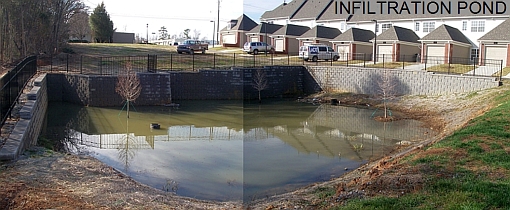
EDI Awards and Recognition
Research to regulation:
Storm Water Infiltration in Piedmont Soils:
The goal of this research was and still is to investigate, examine, and measure the viability of stormwater infiltration in Piedmont clay soils.
This research provides a quantifiable study of two constructed multi-family developments in clay
soils that were designed constructed and monitored for multiple years after completion. This research began in 2004 and is the first of it's kind in North Carolina. This research assisted in the progress of North Carolina's latest BMP manual revisions and current regulatory initiatives and resulted in a 2011 NCASLA Award. Estes Design's role in the projects
studied, included introducing the concept of infiltration in lieu of more traditional BMP's, preconstruction site evaluation, soil testing, conceptual design, regulatory permitting, hydrologic modeling, final design, construction oversight, implementation of the monitoring program and data synthesis. Estes Design also initiated collaborative efforts between University staff and municipal staff for extended monitoring that resulted in a detailed two year study Master's thesis. This research was the culmination of four years of study for two multi-family projects. One project includes eight bioretention gardens plus the first pervious concrete parking lot constructed in North Carolina Piedmont soils with an infiltration basin located underneath and no functioning outlet device other than exfiltration. The second project includes the first bio-infiltration gardens in the region
with no functioning outlet device other than exfiltration. These projects reflect confidence in a quantifiable design methodology for stormwater infiltration that can be reproduced by experienced stormwater professionals.These studies illustrate successful results achieved with varying infiltration rates of
the native soils. These projects are located in the Piedmont Geographic Region and the Charlotte Belt Geologic Region of North Carolina. See our Publications page for more detail.
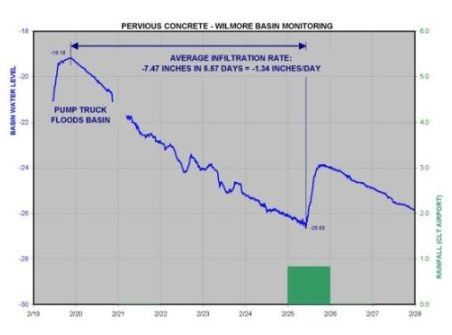
Testing with a watering truck.
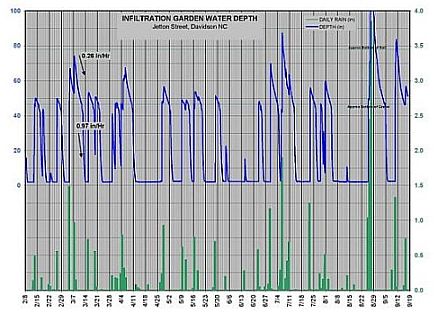
Bio-infiltration 9 month period.
Kentucky APWA Stormwater Project of the Year:
Frankfort Public Safety Parking:
This parking lot was created as part of a stormwater compliance initiative
by the City of Frankfort, Kentucky, by tearing-down an older building and
re-developing the site as a parking area. The pervious concrete parking
surface captures and infiltrates the rain water that falls on its area,
completely eliminating runoff from the parking lot. The project received
the 2009 Project of the Year Award for Storm Water Improvements from the
Kentucky Chapter of the American Public Works Association.
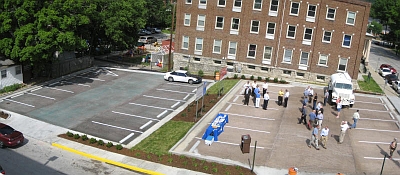
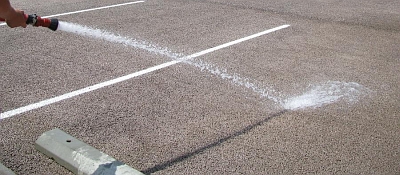
Two-tiered parking area, Pervious Concrete parking surface.

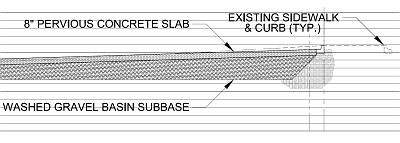
An Infiltration Basin was constructed beneath the parking area.
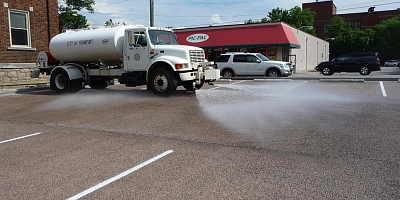
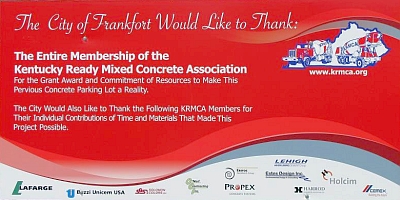
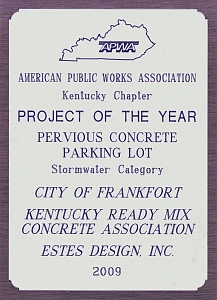
Wilmore Walk:
In this urban redevelopment project, a combination of Bio-Retention
Rain Gardens and North Carolinas first Pervious Concrete Parking infiltration basin treats over 92% of the
new impervious surface storm drainage, with no loss of buildable space. The parking area infiltrates greater than the 50 year storm.
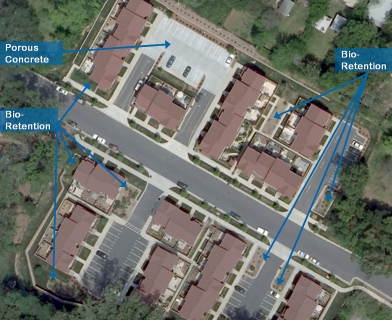
Bio-Retention Rain Gardens:
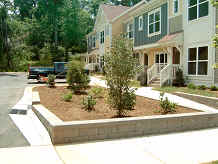
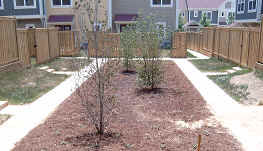
Pervious Concrete Parking / Infiltration Basin:
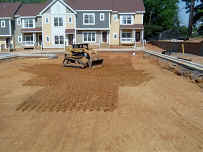
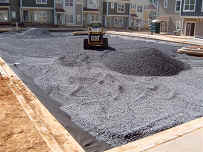
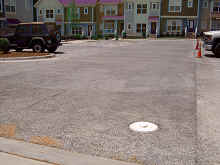
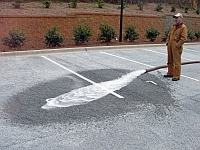
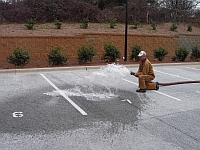

Jetton Park:
This low impact development project uses Rain Gardens to pre-treat
most runoff. Infiltration basins (1 garden & 1 pond) capture the
first-flush pollutants. This combination reduced the size of the
detention pond by 45%.
